The Best Types of Cactus to Up Your Houseplant Game
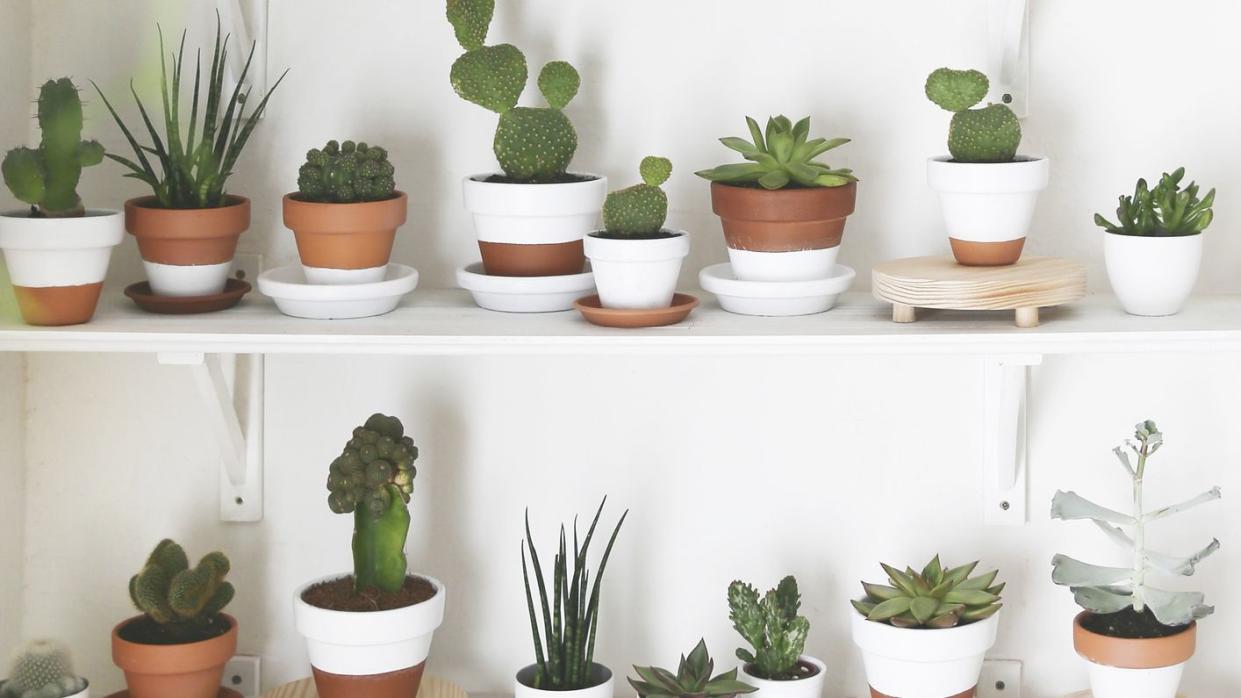
"Hearst Magazines and Yahoo may earn commission or revenue on some items through these links."
Cacti are some of the easiest plants to add to your houseplant collection. These plants survive drought by storing water in their leaves, stems and roots, so they're the ultimate in easy-care plants!
They grow in-ground in warm climates, but they also make fun houseplants if you give them a sunny windowsill.
Cacti have plenty of personality. They come in a variety of sizes, shapes, and textures, but all of them have similar needs: They need direct sunlight with no drafts. They'll thrive under LED grow lights.
If they don't receive sufficient light, they tend to get leggy and unattractive.
Cacti are resilient and forgiving if you're—ahem—a little forgetful about watering. But they should be watered only when the soil feels dry to the touch. A sure way to kill them is to overwater, so always err on the side of too dry rather than too wet!
It's worth noting that some types of cacti aren't the best choices around kids or pets. Those with sharp spines are better grown outdoors, away from curious kids and pets. Or choose types of cacti, such as holiday cacti, that don't have dangerous prickly spines.
Read more: 29 Pet-Friendly Houseplants You Can Grow Without Worry
Ahead, the best cacti you can grow at home:
Thanksgiving Cactus (Schlumbergera truncata)
Thanksgiving cactus is a long-lived type that doesn't have prickly spikes, so it can be grown around kids and pets. It can live for decades with the right care.
It's related to Christmas cactus, which is more difficult to find because it's more fragile to ship, and Easter cactus, which has more star-shaped flowers.
All three types need similar care with bright light and total darkness for 12 to 14 hours, starting in the fall, to rebloom.
Read more: How to Tell a Thanksgiving and Christmas Cactus Apart
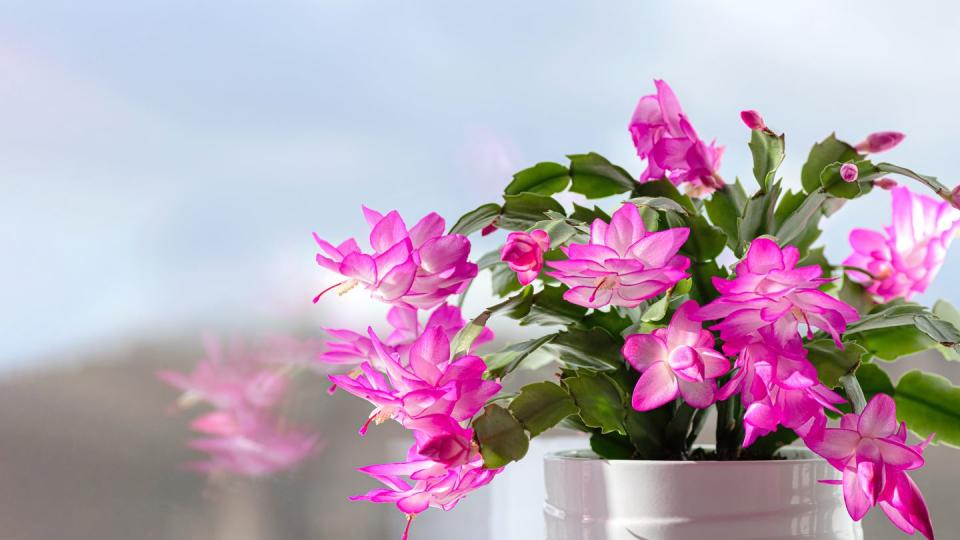
Thimble Cactus (Mammillaria gracilis fragilis)
This adorable little cactus has short spiny stems and yellow flowers in spring or summer. It's a good choice for new plant parents because it's not too fussy.
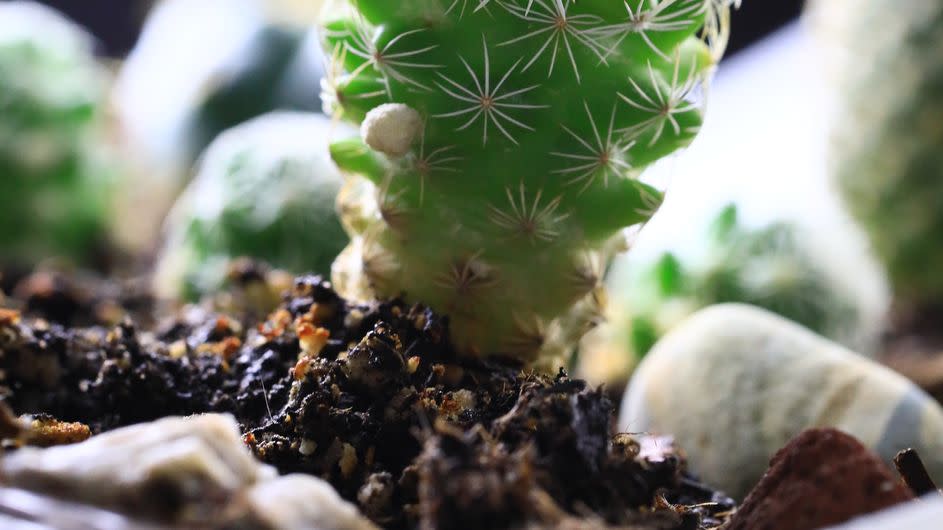
Golden Barrel Cactus (Echinocactus grusonii)
This type of cactus is fast-growing and keeps its cute rounded shape. They can grow up to five feet tall outdoors, though they make a fun windowsill plant indoors.

Peanut Cactus (Echinopsis chamaecereus)
With a name this cute, you simply have to grow this type of cactus! Peanut cactus is an adorable clumping cactus with stems that can curl up to 10 inches long.
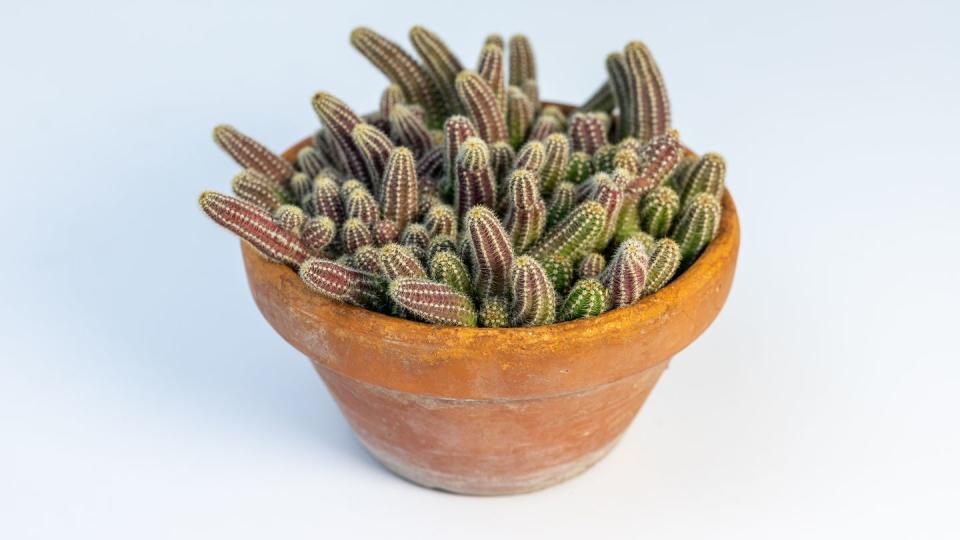
Mistletoe Cactus (Rhipsalis baccifera)
Pencil-thin, trailing stems make this cactus a real showstopper as it matures! It's a tropical epiphyte, like orchids, which adapts well to indoor care.
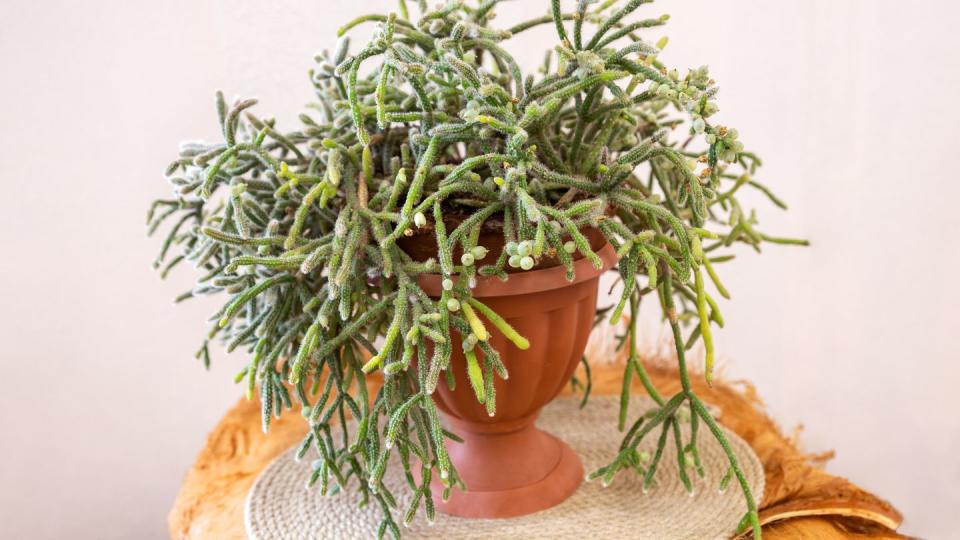
Ric Rac Cactus (Epiphyllum anguliger)
How could we not love a cactus nicknamed after one of our favorite country trims? They grow especially well indoors in a sunny window. It also has night-blooming flowers, though they rarely occur indoors.
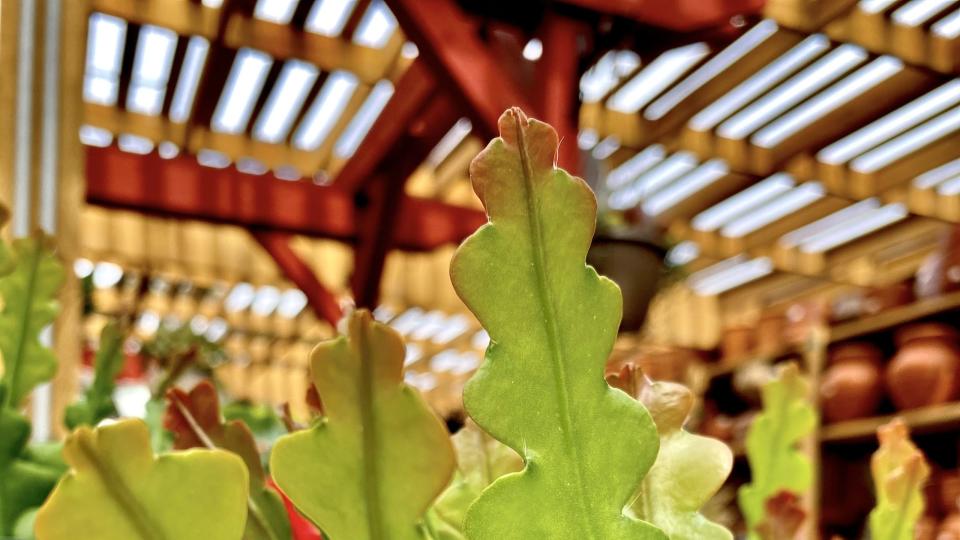
Saguaro Cactus (Carnegiea gigantea)
The tree-like saguaro cactus is native only to the Sonoran Desert and can live for 200 years! Its super-slow growth rate (about an inch per year for the first eight years of its life) keeps it petite if grown indoors.

Fairy Castle Cactus (Acanthocereus tetragonus)
Who knew a cactus could be charming?
The varied stems resemble the turrets of a castle, making it the perfect addition to any whimsical garden. Heads up: It's a very slow grower.

Feather Cactus (Mammillaria plumosa)
The white "feathers" on this cactus look fluffy and soft, but be warned: the younger, shorter spines below that innocuous-looking facade are super-sharp!
Its cute rounded shape and sweetly scented flowers that appear in late summer make it worth growing.
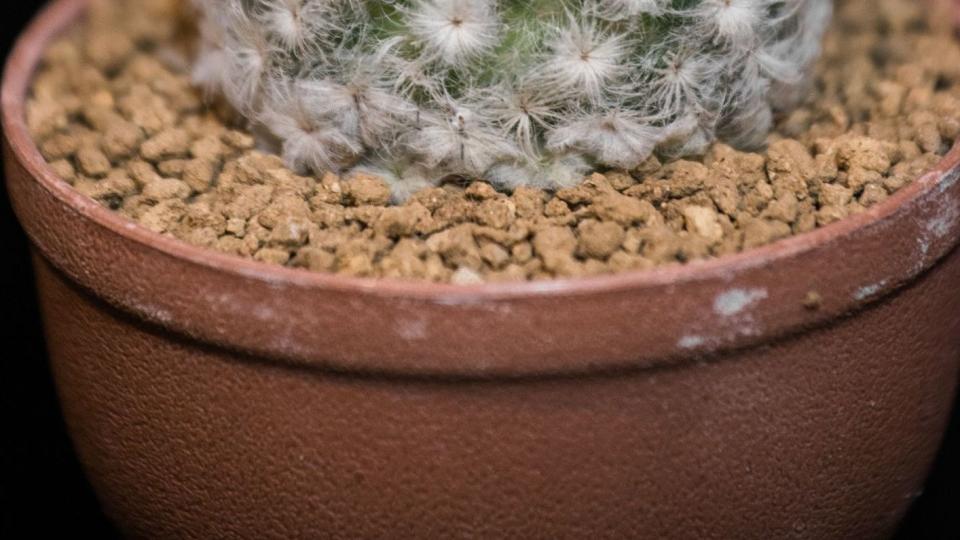
Old Lady Cactus (Mammillaria hahniana)
The funny name may not be the most flattering, but it's a cute cactus that is easy to grow!
It may develop a ring of hot pink flowers in late winter to early spring.
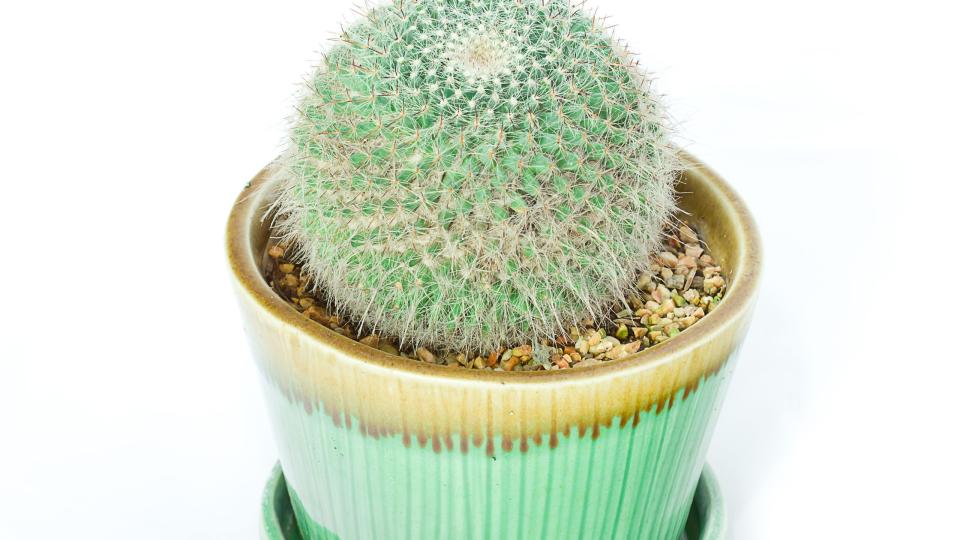
Bunny Ears Cactus (Opuntia microdasys)
The bunny ears cactus is a popular choice for its cute shape. This plant does not have spines like a traditional cactus, but that doesn't mean it's cuddly! The glochids (tufts of short, hairy spines that give it a polka-dot appearance) can still stick you.
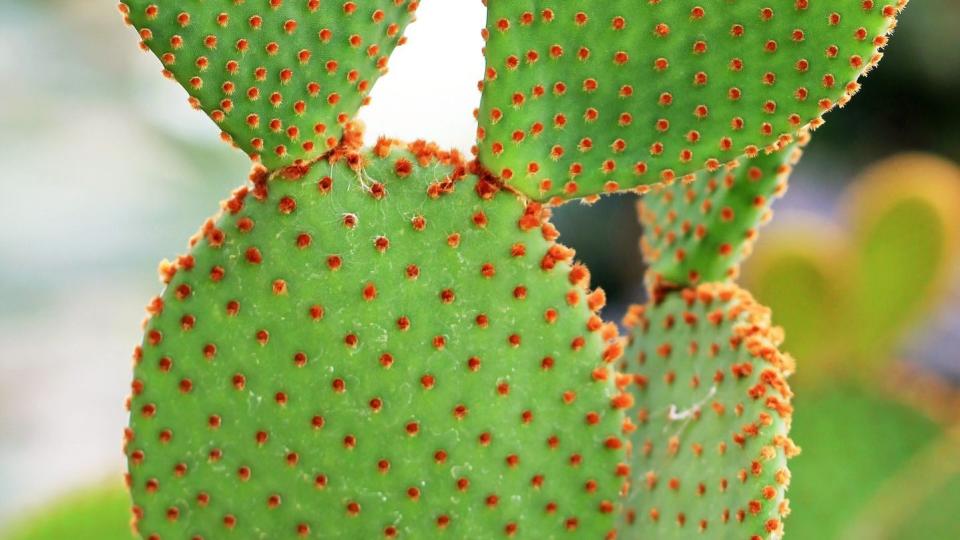
Moon Cactus (Gymnocalycium Mihanovichii )
Moon cactus is a popular addition to a succulent garden thanks to its bright color. The hybrid plant is actually two types of cacti grafted together, and its lifespan is short compared to other cacti.
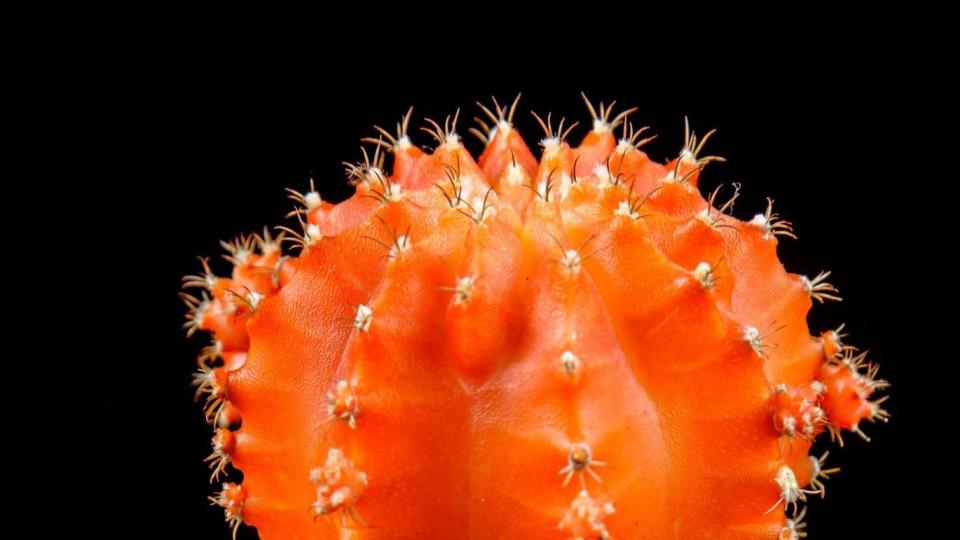
Easter Cactus (Rhipsalidopsis gaertneri)
Easter cactus blooms in early spring, but even without the bright flowers, the green segments make for an attractive plant year round. Like other holiday cacti, Easter cactus prefers bright light but not direct sunlight, which will burn its leaves, which technically are flattened stems.
Read more: Easter Cactus Care Tips
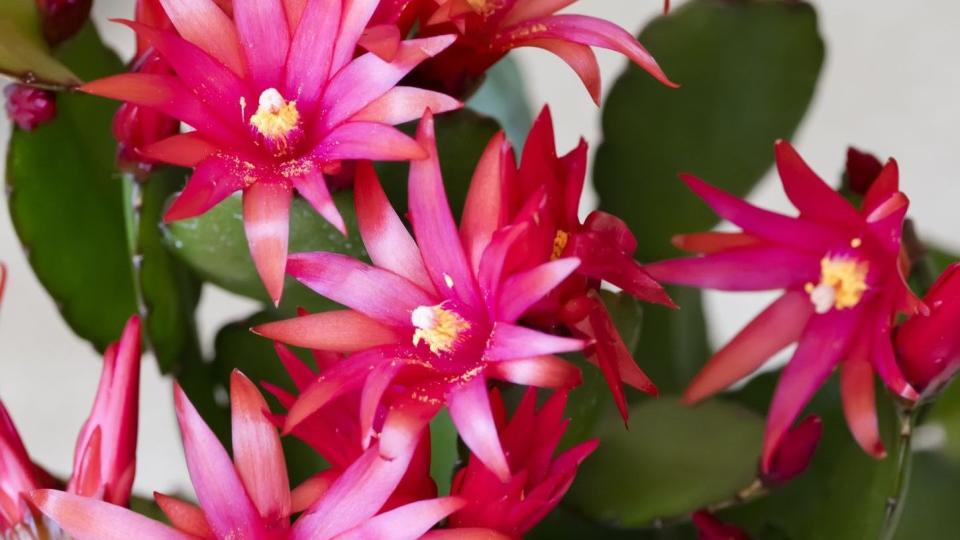
Ladyfinger Cactus (Mammillaria elongata)
Ladyfinger cactus is a sweet addition to a succulent garden. This petite cactus has clusters of cylindrical stems and yellowish spines that give it an overall golden appearance.
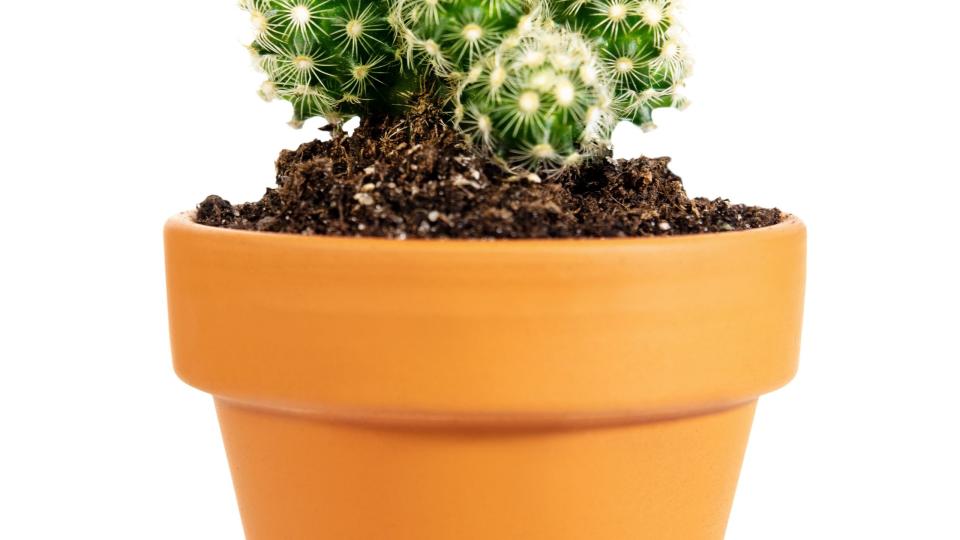
Rat Tail Cactus (Aporocactus flagelliformis)
The distinctly unattractive name isn't really fair to this plant! Rat tail cactus has long trailing stems and pretty pink flowers, so it's a fun addition to any cactus collection.
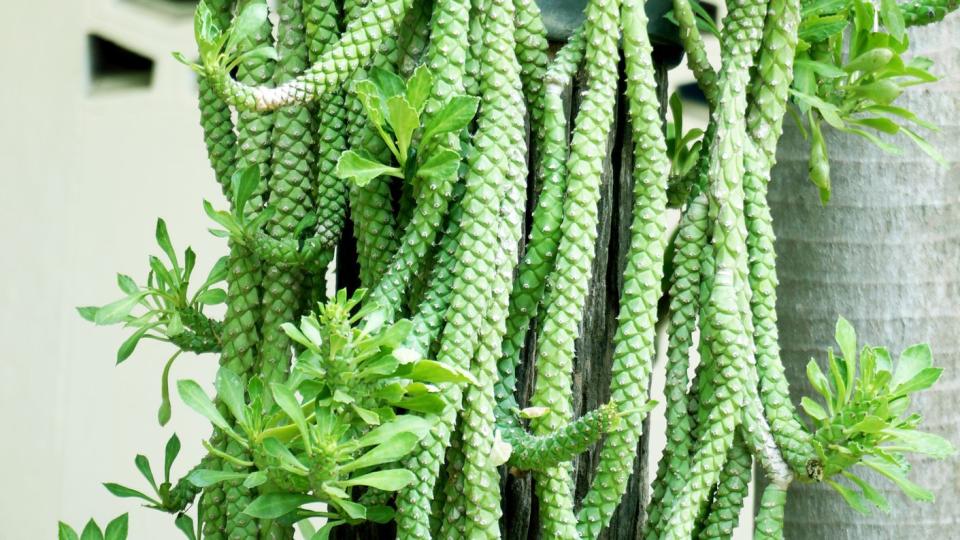
Parodia (various species)
This ball-shaped cactus boasts showy flowers, which may be yellow, red, orange, or pink, depending on the species. This type of cactus prefers a little afternoon shade, especially if grown outdoors.
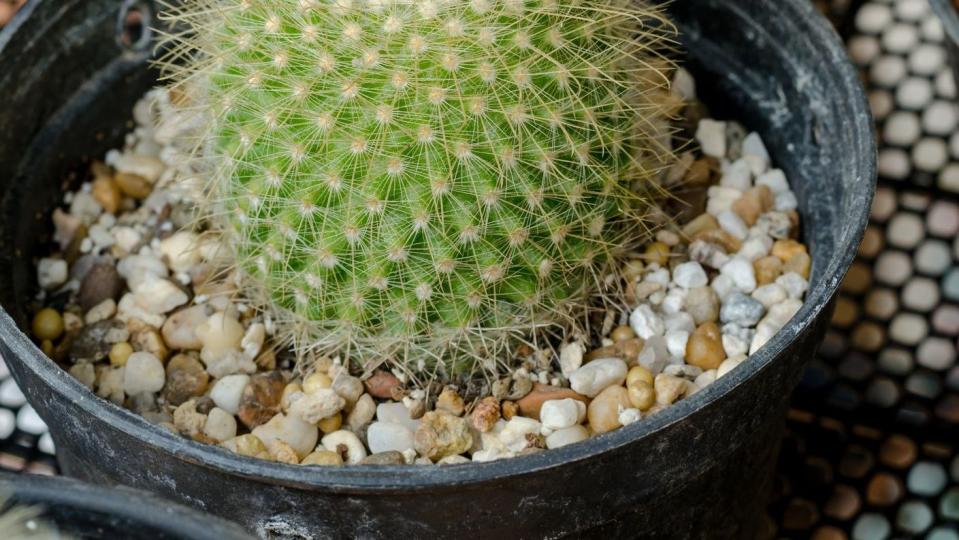
Bishop's Cap Cactus (Astrophytum myriostigma)
The star-shaped bishop's cap cactus features a short-blooming yellow flower. Its silvery sheen gives it an interesting appearance.
Read more: 25 Most Striking Succulents to Grow in Your Home or Garden
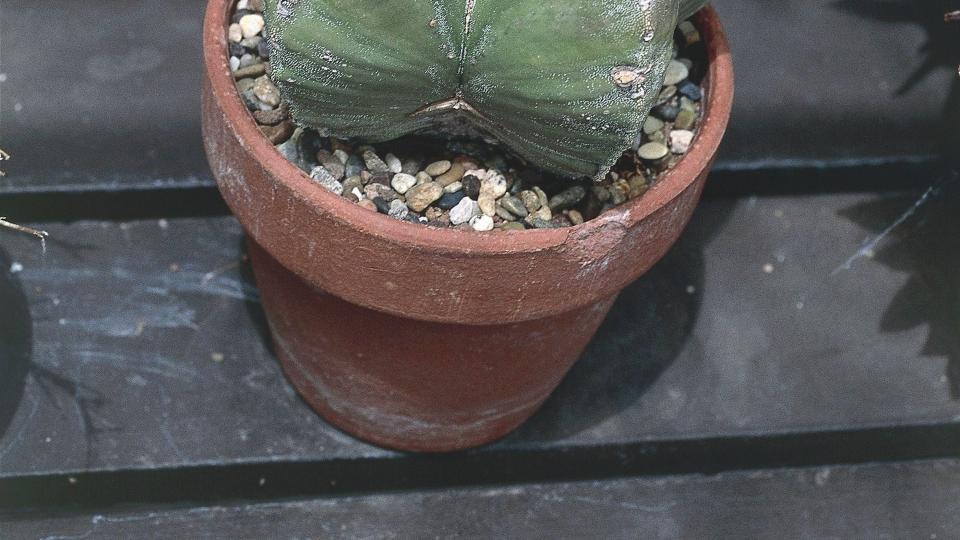
You Might Also Like

